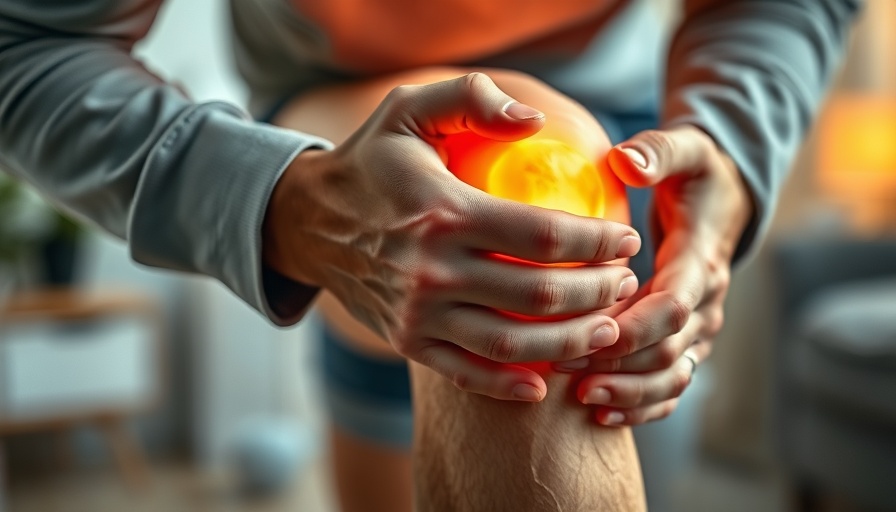
Joint Pain Relief: Embracing Non-Surgical Solutions
Joint pain is a common ailment that affects millions of people globally, often impacting their ability to enjoy daily activities. While surgical interventions can be effective, they are typically viewed as a last resort due to associated risks and recovery times. Fortunately, recent advancements in non-surgical treatments offer new hope for those suffering from chronic joint pain.
Regenerative Medicine: A Game Changer in Orthopedic Care
One of the most promising areas in the treatment of joint pain is regenerative medicine. Techniques like Platelet-Rich Plasma (PRP) and stem cell therapy have been gaining traction and showcasing remarkable results.
Platelet-Rich Plasma (PRP) Therapy: This treatment involves drawing blood from the patient, processing it to concentrate the platelets, and then injecting this concentrated solution into the painful joint. The high concentration of platelets releases growth factors that aid tissue healing and help reduce inflammation, promoting better function.
Stem Cell Therapy: This innovative approach uses stem cells from the patient’s own body, which can differentiate into cartilage and bone cells. Research shows that stem cells can help regenerate damaged joint structures, making them a valuable option for conditions such as osteoarthritis.
Dietary Changes: Fuel Your Healing
A healthy diet plays a crucial role in managing joint pain. Incorporating anti-inflammatory foods can significantly reduce symptoms. Omega-3 fatty acids found in fish, nuts, and seeds, as well as antioxidants from fruits and vegetables, can help lower inflammation levels in the body.
Foods to Include: Some specific food recommendations include:
- Fatty Fish: Salmon and mackerel are rich in omega-3s and beneficial for joint health.
- Green Leafy Vegetables: Spinach and kale provide antioxidants and essential nutrients.
- Berries: Blueberries and strawberries contain compounds that combat inflammation.
Lifestyle Tweaks: Move Towards Mobility
Aside from dietary changes, certain lifestyle adjustments can enhance the quality of life for individuals suffering from joint pain. Regular physical activity is critical, but it should be tailored to avoid further injury. Low-impact exercises, such as swimming, cycling, or yoga, help maintain mobility and strengthen the muscles around the joints.
In addition, weight management is crucial; carrying excess weight puts added strain on joints, particularly in the knees and hips. A combination of diet and exercise can help maintain healthy body weight, thus reducing joint stress.
Complementary Therapies: The Power of Holistic Approaches
Incorporating therapies such as acupuncture, massage, and physiotherapy can augment traditional treatments. Acupuncture, for instance, has been shown to provide pain relief by stimulating specific points in the body, promoting the release of endorphins.
Massage Therapy: Therapeutic massage can improve blood circulation, promote relaxation, and relieve tension in the muscles surrounding painful joints.
Future Insights: What Lies Ahead in Joint Care?
The landscape of joint pain management is evolving rapidly, with ongoing research focusing on enhancing regenerative medicine techniques and developing new pharmaceuticals. Experts believe that as technology advances, more personalized treatments tailored to an individual's genetic makeup will become available, potentially revolutionizing joint pain care.
Staying informed about these advancements can empower individuals to make proactive decisions regarding their joint health and recovery options. As more effective non-surgical methods emerge, the need for invasive surgeries may continue to decline.
In conclusion, while joint pain can be a debilitating condition, numerous effective non-surgical strategies are available. By exploring dietary changes, lifestyle adjustments, and recent innovations in regenerative therapies, individuals can find relief and improve their overall quality of life. If you're struggling with persistent pain, it might be worth considering these alternatives before opting for surgery. Investigate these options, consult with healthcare professionals, and embark on a journey towards joint health.
 Add Row
Add Row  Add
Add 




Write A Comment